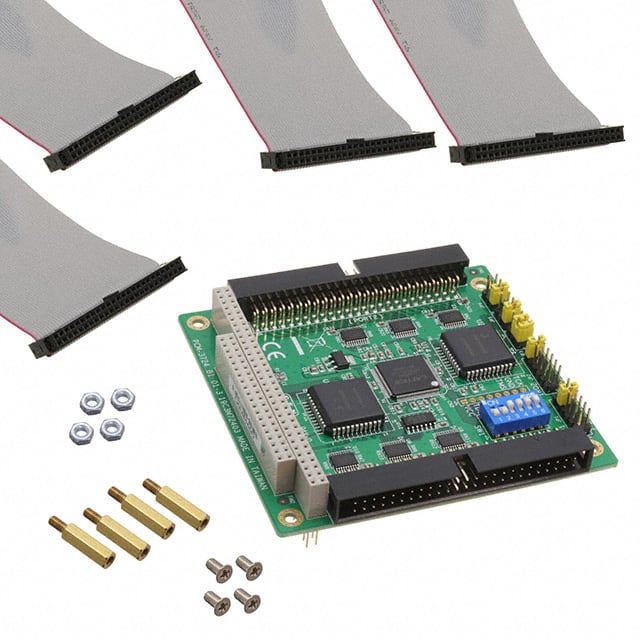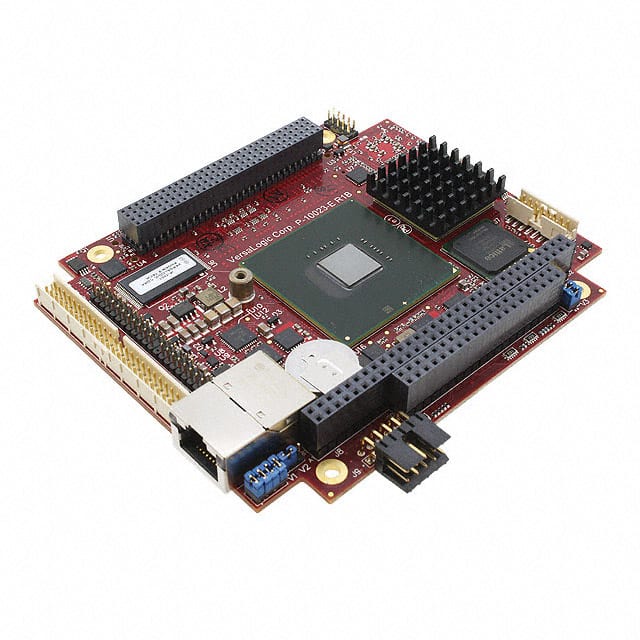Ⅰ. Embedded Computers
Ⅱ. Mechanical Characteristics of Embedded Computers
Ⅲ. Electrical Characteristics of Embedded Computers
An embedded computer is a computer system that is integrated into a larger device or system, and is designed to perform specific tasks. These devices are typically dedicated to a single function, and are used in a wide range of applications such as consumer electronics, automotive systems, medical equipment, and industrial automation.

Embedded computers typically have a smaller form factor, lower power consumption, and are optimized for real-time performance. They are often built around a microcontroller or microprocessor, and include memory, input/output interfaces, and other peripherals.
One of the main advantages of embedded computers is their ability to perform specific tasks with high reliability and efficiency. They can also be designed to operate in harsh environments, such as high temperature or vibration, making them suitable for use in industrial or military applications.
Some common examples of embedded computers include:
Smartphones: Smartphones are a common example of embedded computers, with a wide range of sensors and communication interfaces that allow them to perform various functions, such as making calls, browsing the internet, and running apps.
Automobiles: Modern automobiles often include embedded computers that control various functions, such as engine management, climate control, and entertainment systems.
Medical Devices: Medical devices, such as patient monitors and diagnostic equipment, often include embedded computers that collect and analyze data, and provide real-time feedback to healthcare professionals.

Industrial Automation: Embedded computers are used in a wide range of industrial automation applications, such as process control, machine monitoring, and robotics.
In summary, embedded computers are specialized computer systems that are integrated into larger devices or systems and are designed to perform specific tasks. They offer high reliability, efficiency, and are optimized for real-time performance, making them suitable for use in a wide range of applications.
Mechanical Characteristics of Embedded Computers
Embedded computers are designed to perform specific tasks, such as controlling machinery, monitoring and analyzing data, and managing communication networks. They are typically small, efficient, and reliable, with a specific set of mechanical characteristics that make them suitable for their intended applications. Here are some of the mechanical characteristics of embedded computers:
Size and Form Factor: Embedded computers are designed to be small and compact, with a form factor that matches the application requirements. They can be as small as a credit card or as large as a shoebox, depending on the application needs.
Mounting Options: Embedded computers can be mounted in various ways, such as on a wall, on a DIN rail, or inside an enclosure. They are designed to be easily installed and removed, and to withstand the physical stresses of their mounting environment.
Operating Temperature Range: Embedded computers are designed to operate over a specific temperature range, depending on the application requirements. They can operate in extreme temperatures, such as those found in industrial environments or in outdoor settings.
Shock and Vibration Resistance: Embedded computers are designed to withstand shock and vibration, which are common in industrial environments. They are built with ruggedized components that can withstand the physical stresses of their environment.
Power Consumption: Embedded computers are designed to be energy-efficient, with low power consumption. They can be powered by a variety of sources, such as AC or DC power, batteries, or solar panels.
Input/Output Interfaces: Embedded computers are equipped with a variety of input/output interfaces, such as Ethernet, USB, serial, and GPIO. These interfaces allow them to communicate with other devices, sensors, and control systems.
The mechanical characteristics of embedded computers are tailored to their specific application requirements. They are designed to be small, rugged, and energy-efficient, with a variety of mounting and interface options to suit different environments and use cases.
Electrical Characteristics of Embedded Computers
Embedded computers are electronic devices that are designed to perform specific tasks, such as controlling machinery, collecting and analyzing data, and managing communication networks. They have specific electrical characteristics that enable them to operate reliably and efficiently in their intended applications. Here are some of the electrical characteristics of embedded computers:
Power Consumption: Embedded computers are designed to be energy-efficient, with low power consumption. This is important in applications where power is limited or expensive. The power consumption of embedded computers can vary depending on the specific design and intended use, and may range from a few watts to milliwatts.
Operating Voltage Range: Embedded computers are designed to operate over a specific voltage range, typically between 3.3V and 24V. The specific voltage range can vary depending on the application requirements.
Clock Speed: Embedded computers have a clock speed that determines how quickly they can process data. The clock speed can range from a few MHz to several GHz, depending on the specific design and intended use.
Input/Output Interfaces: Embedded computers are equipped with a variety of input/output interfaces, such as Ethernet, USB, serial, and GPIO. These interfaces allow them to communicate with other devices, sensors, and control systems.
Memory: Embedded computers have a limited amount of memory, which is used to store data and instructions. The amount of memory can vary depending on the specific design and intended use.
Operating Temperature Range: Embedded computers are designed to operate over a specific temperature range, typically between -40°C and 85°C. The specific temperature range can vary depending on the application requirements.
The electrical characteristics of embedded computers are tailored to their specific application requirements.They are designed to be energy-efficient, operate at specific voltages and clock speeds, and have a limited amount of memory.They also have a variety of input/output interfaces and are designed to operate reliably over a specific temperature range.



